- Clone
- 43A3 (See other available formats)
- Regulatory Status
- RUO
- Other Names
- Endoglin
- Isotype
- Mouse IgG1, κ
- Barcode Sequence
- ATCGTCGAGAGCTAG
- Ave. Rating
- Submit a Review
- Product Citations
- publications
| Cat # | Size | Price | Quantity Check Availability | Save | ||
|---|---|---|---|---|---|---|
| 323231 | 10 µg | $369 | ||||
CD105 is also known as Endoglin. It is a type I integral membrane homodimer protein with subunits of 90 kD found on vascular endothelial cells and syncytiotrophoblasts of placenta. CD105 is weakly expressed on stromal fibroblasts. It is also expressed on activated monocytes and tissue macrophages. Expression of CD105 is increased on activated endothelium in tissues undergoing angiogenesis, such as in tumors, or in cases of wound healing or dermal inflammation. CD105 is a component of the TGF-β receptor system in human umbilical vein endothelial cells and binds TGF-β1 and β3 with high affinity but does not bind to TGF-β2.
Product DetailsProduct Details
- Verified Reactivity
- Human
- Antibody Type
- Monoclonal
- Host Species
- Mouse
- Immunogen
- L-cells transfected with human CD105
- Formulation
- Phosphate-buffered solution, pH 7.2, containing 0.09% sodium azide and EDTA
- Preparation
- The antibody was purified by chromatography and conjugated with TotalSeq™-D oligomer under optimal conditions.
- Concentration
- 0.5 mg/mL
- Storage & Handling
- The antibody solution should be stored undiluted between 2°C and 8°C. Do not freeze.
- Application
-
PG - Quality tested
- Recommended Usage
-
Each lot of this antibody is quality control tested by immunofluorescent staining with flow cytometric analysis and the oligomer sequence is confirmed by sequencing. TotalSeq™-D antibodies are compatible with Mission Bio’s Tapestri Single-Cell Sequencing Platform for simultaneous detection of DNA and Protein.
To maximize performance, it is strongly recommended that the reagent be titrated for each application, and that you centrifuge the antibody dilution before adding to the cells at 14,000xg at 2 - 8°C for 10 minutes. Carefully pipette out the liquid avoiding the bottom of the tube and add to the cell suspension. For Proteogenomics analysis, the suggested starting amount of this reagent for titration is ≤ 1.0 µg per million cells in 100 µL volume. Refer to the corresponding TotalSeq™ protocol for specific staining instructions.
Buyer is solely responsible for determining whether Buyer has all intellectual property rights that are necessary for Buyer's intended uses of the BioLegend TotalSeq™ products. For example, for any technology platform Buyer uses with TotalSeq™, it is Buyer's sole responsibility to determine whether it has all necessary third party intellectual property rights to use that platform and TotalSeq™ with that platform. - Additional Product Notes
-
TotalSeq™-D reagents are designed to profile protein expression at single cell level. The Mission Bio Tapestri platform and sequencer (e.g. Illumina analyzers) are required. Please contact technical support for more information, or visit biolegend.com/totalseq/single-cell-dna
The barcode flanking sequences are CGAGATGACTACGCTACTCATGG (PCR handle), and GAGCCGATCTAGTATCTCAGT*C*G (capture sequence). * indicates a phosphorothioated bond, to prevent nuclease degradation.
View more applications data for this product in our Application Technical Notes. -
Application References
(PubMed link indicates BioLegend citation) - RRID
-
AB_2936590 (BioLegend Cat. No. 323231)
Antigen Details
- Structure
- Associates with TGF-ß receptor I and II, homodimeric type I integral membrane protein, 90 kD
- Distribution
-
Endothelial cells, activated monocytes/macrophages, bone marrow stromal cells, hematopoietic stem/progenitor cells
- Function
- Modulates cellular response to TGF-ß, involved in vascular development and remodelling
- Ligand/Receptor
- TGF-ß1, TGF-ß3
- Cell Type
- Endothelial cells, Hematopoietic stem and progenitors, Macrophages, Mesenchymal Stem Cells, Monocytes
- Biology Area
- Angiogenesis, Cell Biology, Immunology, Stem Cells
- Molecular Family
- Adhesion Molecules, CD Molecules
- Antigen References
-
1. Mason D, et al. Eds. 2002. Leucocyte Typing VII. Oxford University Press. New York.
2. Pierelli L, et al. 2001. Leuk. Lymphoma 42:1195. - Gene ID
- 2022 View all products for this Gene ID
- UniProt
- View information about CD105 on UniProt.org
Related FAQs
Other Formats
View All CD105 Reagents Request Custom Conjugation| Description | Clone | Applications |
|---|---|---|
| Purified anti-human CD105 | 43A3 | FC |
| FITC anti-human CD105 | 43A3 | FC |
| PE anti-human CD105 | 43A3 | FC |
| APC anti-human CD105 | 43A3 | FC |
| Alexa Fluor® 488 anti-human CD105 | 43A3 | FC |
| Alexa Fluor® 647 anti-human CD105 | 43A3 | FC |
| Biotin anti-human CD105 | 43A3 | FC |
| PerCP/Cyanine5.5 anti-human CD105 | 43A3 | FC |
| PE/Cyanine7 anti-human CD105 | 43A3 | FC |
| Brilliant Violet 421™ anti-human CD105 | 43A3 | FC |
| TotalSeq™-A0068 anti-human CD105 | 43A3 | PG |
| PE/Dazzle™ 594 anti-human CD105 | 43A3 | FC |
| TotalSeq™-C0068 anti-human CD105 | 43A3 | PG |
| TotalSeq™-B0068 anti-human CD105 | 43A3 | PG |
| APC/Fire™ 750 anti-human CD105 Antibody | 43A3 | FC |
| TotalSeq™-D0068 anti-human CD105 | 43A3 | PG |
Compare Data Across All Formats
This data display is provided for general comparisons between formats.
Your actual data may vary due to variations in samples, target cells, instruments and their settings, staining conditions, and other factors.
If you need assistance with selecting the best format contact our expert technical support team.
-
Purified anti-human CD105
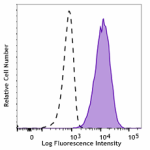
Human monocytic cell line THP-1 stained with purified 43A3, ... -
FITC anti-human CD105
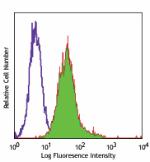
Human monocytic cell line THP-1 stained with 43A3 FITC -
PE anti-human CD105
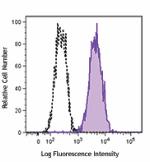
Human mesenchymal stem cells were stained with CD105 (clone ... -
APC anti-human CD105
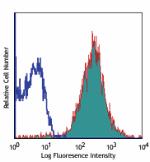
Human monocytic cell line THP-1 stained with 43A3 APC -
Alexa Fluor® 488 anti-human CD105
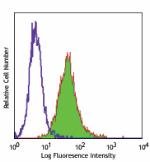
Human monocytic cell line THP-1 stained with 43A3 Alexa Fluo... -
Alexa Fluor® 647 anti-human CD105
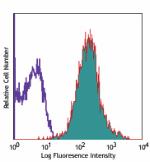
Human monocytic cell line THP-1 stained with 43A3 Alexa Fluo... -
Biotin anti-human CD105
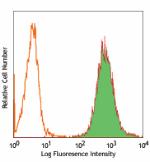
Human monocytic cell line THP-1 stained with biotinylated 43... -
PerCP/Cyanine5.5 anti-human CD105
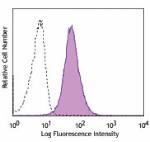
Human monocytic cell line, THP-1, was stained with CD105 (Cl... -
PE/Cyanine7 anti-human CD105
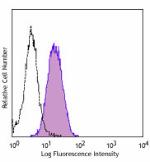
Human monocytic cell line (THP-1) stained with CD105 (clone ... -
Brilliant Violet 421™ anti-human CD105

Human leukemic monocyte cell line THP-1 was stained with CD1... -
TotalSeq™-A0068 anti-human CD105
-
PE/Dazzle™ 594 anti-human CD105
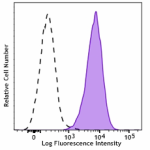
Human monocytic cell line THP-1 was stained with CD105 (clon... -
TotalSeq™-C0068 anti-human CD105
-
TotalSeq™-B0068 anti-human CD105
-
APC/Fire™ 750 anti-human CD105 Antibody
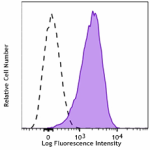
Human monocytic cell line THP-1 was stained with CD105 (clon... -
TotalSeq™-D0068 anti-human CD105
 Login/Register
Login/Register 













Follow Us